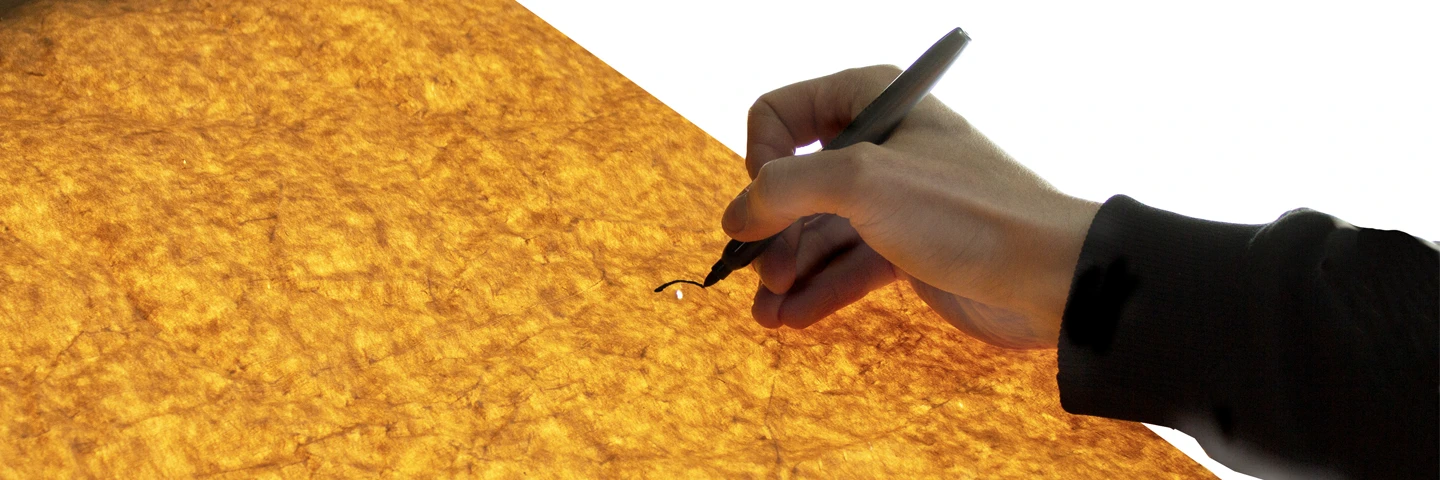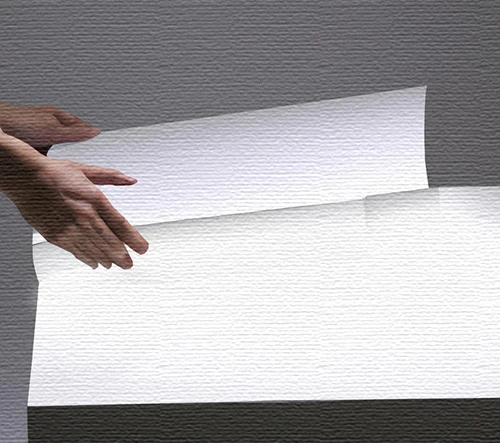

In the papermaking industry, quality control is essential to ensure that products meet customer requirements and industry standards. Whether producing high-quality specialty paper or everyday writing paper, consistent quality is crucial to success. During the manufacturing process, it is important to inspect the paper at various stages to catch any defects or inconsistencies before they become a larger problem.
Traditionally, paper inspection has been a manual process, with operators visually examining the paper as it moves through the production line. While this method has proven effective in the past, it is time-consuming, labor-intensive, and can be prone to human error. Additionally, manual inspection often requires operators to work in close proximity to moving machinery, posing a safety risk.
In recent years, the use of light boxes for paper inspection has become increasingly popular. Light boxes are a type of inspection equipment that use bright, even illumination to reveal surface defects and inconsistencies in a clear, high-contrast manner. By providing a clear view of the entire surface of the paper, light boxes make it easier for operators to quickly identify and address any issues.
There are several key benefits of using light boxes for paper inspection. First and foremost, light boxes allow for faster and more accurate detection of defects, reducing the risk of errors and improving quality control. They also offer improved production efficiency and reduced waste, as issues can be caught and corrected more quickly. Additionally, light boxes provide a safer, more ergonomic inspection process, reducing the risk of workplace injuries and making the job easier and more comfortable for operators.
We will explore the importance of quality control in paper-making, the traditional inspection process, and the advantages of using light boxes for paper inspection. We will also discuss real-world applications and case studies to provide a comprehensive understanding of how light boxes can help improve the production of high-quality paper.
The paper making process is complex, involving many stages and requiring specialised equipment. Understanding the process and the key points where inspection takes place is essential for ensuring high-quality paper production.
The basic process of paper-making starts with mixing pulp fibres with water to create a slurry. The slurry is then spread evenly onto a moving mesh belt, where the water is removed and the fibres bond to form a sheet of paper. The sheet is then dried, wound into rolls, and cut to size.
Throughout the paper-making process, there are several key points where inspection is critical. For example, after the slurry has been spread onto the mesh belt, it is important to inspect the sheet for any inconsistencies or defects, such as clumps, fibres, or particles. If these are not detected and corrected at this stage, they can become more difficult and costly to address later in the process.
Another important inspection point is after the paper has been dried and wound into rolls. At this stage, it is important to inspect the paper for any defects or inconsistencies that may have developed during the drying process. Light boxes are particularly useful at this stage, as they provide an even, bright illumination that makes it easy to detect any issues.
In the following sections, we will discuss the equipment used for inspection and how light boxes improve the quality control process. Understanding the manufacturing process and the key inspection points is essential for effectively using light boxes to improve the production of high-quality paper.
In the papermaking industry, there are several types of inspection equipment used to ensure high-quality production. Light boxes are one of the most popular and effective types of inspection equipment, offering several advantages over traditional methods.
Light boxes are specialised inspection equipment that use bright, even illumination to reveal surface defects and inconsistencies in a clear, high-contrast manner. They consist of a large, flat light source, such as a fluorescent bulb or LED array, that provides bright, even illumination. The paper is placed on top of the light source and viewed from above, making it easy to identify any issues.
Compared to traditional inspection methods, such as manual inspection or using a simple light source, light boxes offer several advantages. For example, light boxes provide a clear, high-contrast view of the entire surface of the paper, making it easier for operators to quickly identify any issues. They also reduce the risk of human error, as the bright, even illumination makes it easier for operators to see and address any defects.
Light boxes also offer improved safety and ergonomics compared to traditional inspection methods. Because light boxes provide an elevated viewing platform, operators do not need to work in close proximity to moving machinery, reducing the risk of workplace injuries. Additionally, light boxes typically have adjustable height and viewing angle, making it easier for operators to view the paper without straining their neck or back.
In the following sections, we will discuss in more detail how light boxes improve the quality control process in papermaking and provide real-world examples of their use. By understanding the advantages of light box inspection equipment, papermakers can make informed decisions about how best to improve the quality and efficiency of their production process.
Light boxes offer several key benefits for papermakers looking to improve the quality and efficiency of their production process. These benefits include:
Light boxes provide bright, even illumination that makes it easier for operators to quickly identify and address any defects or inconsistencies in the paper. This helps to improve the overall quality of the final product and reduces the risk of defects making it to the customer.
Light boxes are designed to be used quickly and easily, reducing the time and resources required for inspection. This can result in a more streamlined production process and reduced costs.
Light boxes reduce the risk of human error by providing a clear, high-contrast view of the paper. This makes it easier for operators to identify and address any issues, reducing the risk of defects slipping through.
Light boxes provide an elevated viewing platform that reduces the risk of workplace injuries and allows operators to view the paper without straining their neck or back. This can result in improved working conditions and increased operator comfort.
Light boxes can be used for a variety of inspection applications in papermaking, from checking for defects in the paper itself to inspecting the rolls for any issues that may have developed during storage.
In the following sections, we will discuss real-world examples of how light boxes have been used to improve the quality and efficiency of papermaking production processes. By understanding the benefits of using light boxes for inspection, papermakers can make informed decisions about how best to improve their production process and produce high-quality paper.
Light boxes are widely used in the papermaking industry to improve the quality and efficiency of production processes. Here are a few real-world examples of how light boxes have been used to achieve these goals:
Detecting Defects in the Paper: In one example, a high end paper manufacturer was having difficulty detecting small defects in the paper, such as fibres and particles, that were causing problems later in the production process. By using a large format light box for inspection, they were able to quickly and easily identify these defects and address them before they became more difficult to fix. The light table integrated a paper roll holder and overhead gantry light. Read More On the Arjowiggins Paper Inspection Table
Improving Roll Quality: In another example, a paper manufacturer was using manual inspection methods to check the quality of their paper rolls. This process was slow, prone to human error, and resulted in a high rate of defects slipping through. By using a light box for inspection, they were able to reduce the time required for inspection, reduce the risk of human error, and improve the overall quality of the rolls.
Streamlining the Inspection Process: In a third example, a paper manufacturer was using several different inspection methods, each with its own set of equipment and procedures. By consolidating their inspection process and using light boxes, they were able to streamline their production process, reduce the time and resources required for inspection, and improve the overall quality of the final product.
These real-world examples demonstrate the benefits that light boxes can bring to the papermaking industry, including improved quality control, increased efficiency, reduced risk of human error, improved safety and ergonomics, and versatility. By understanding these benefits and how they have been achieved in real-world applications, papermakers can make informed decisions about how best to improve their production process and achieve their goals.
In the conclusion, we will summarise the key points covered in this article and provide recommendations for papermakers looking to improve the quality and efficiency of their production process.
In this article, we have explored the benefits and real-world examples of using light boxes for inspection in the papermaking industry. Light boxes provide a fast, efficient, and reliable way to inspect paper, helping papermakers to improve the quality and efficiency of their production process.
By highlighting the key benefits of light boxes, including improved quality control, increased efficiency, reduced risk of human error, improved safety and ergonomics, and versatility, we have demonstrated the many ways in which light boxes can help papermakers to achieve their goals. Additionally, by providing real-world examples of how light boxes have been used to improve production processes, we have shown the concrete benefits that can be achieved through their use.
In conclusion, light boxes are a valuable tool for papermakers looking to improve the quality and efficiency of their production process. Whether you are seeking to improve quality control, reduce the risk of human error, or streamline your inspection process, light boxes offer a range of benefits that can help you achieve your goals.
If you are interested in exploring the use of light boxes for inspection in your papermaking process, we recommend contacting us to learn more about your options and determine the best solution for your needs. With the right light box in place, you can take your papermaking process to the next level and achieve greater success.